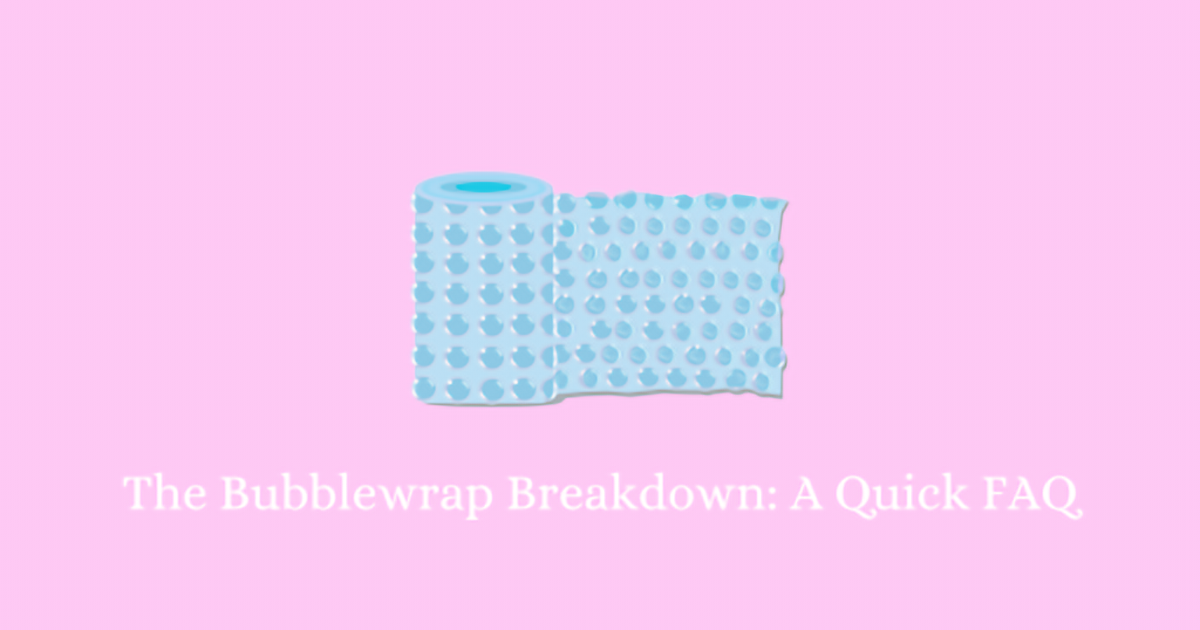Bubblewrap is one of those things that practically everyone has experience with. Whether it’s their go-to protective material for wrapping items for posting, or just as a fun thing to play with when it comes inside shipping boxes, we’re well aware of what bubble wrap is and its role in the packing protection process.
At eBPak, we stock a wide selection of packaging options, ranging from padded envelopes to Biofill void-fill and beyond. So, if you’ve been looking for a reliable provider of packing supplies and materials, we’re Sydney’s packing specialists. That’s why, today, we’re going to go through some of the most frequently asked questions about bubblewrap, and provide you with all the information you could possibly need, and more!
Can Bubblewrap Be Recycled?
The question of whether bubble wrap can be recycled is certainly a more complicated one than you may initially think. This is due to the fact that bubble wrap is considered a soft plastic, meaning while it is indeed made of recyclable material, it can cause massive issues for recycling plant mechanisms and machinery. So, in other words, you can’t put it in your standard recycling bin. You can, however, take it to designated soft plastic recycling pickup points, along with your other soft plastics, making for an easy alternative to filling your trash with recyclable, space-consuming wrap.
Is Bubblewrap a Good Insulator?
You may be surprised to learn that yes, bubble wrap is actually quite effective at trapping heat. This is due to the air inside forming a barrier allowing the wrap to trap any heat and maintain warmth. People have used bubble wrap as an insulator for their windows, and whilst it’s not always going to be the most aesthetically pleasing solution, it is certainly going to work.
How to Use Bubble Wrap
While there’s no definitive right way to use bubble wrap, there are some tips that will ensure that you’re getting the best protection while using it:
- Wrap items with the bubbles facing inward for additional protection.
- Wrap items on a flat, clean surface. Avoid any surfaces with grit or debris that could get in and damage the item within the wrap.
- Don’t be conservative when wrapping your items. The better you wrap an item, the less chance there is that it will get broken in shipping, and nobody likes an item breaking in shipping, especially not the receiver.
- For scratch-sensitive items, consider placing foam beneath the wrap for optimal protection.
Bubble wrap is an exceptional option for protecting your items, but to ensure that you’re getting the most out of it, you have to make sure that you’re using it right. By following these simple tips, your packages should be fantastically protected no matter where they’re headed in the world.
When Was Bubble Wrap Made?
Although it may seem like it has existed forever, bubble wrap is actually a relatively modern creation, first being invented in 1957 by Alfred Fielding and Marc Chavannes. The pair were looking to make a new type of wall covering and instead stumbled into one of the most widely known and used items in modern shipping. It’s a nice reminder that all products we use had to start somewhere and that for everything we take for granted, someone had to be the first person to bring that now-ubiquitous idea to life.

